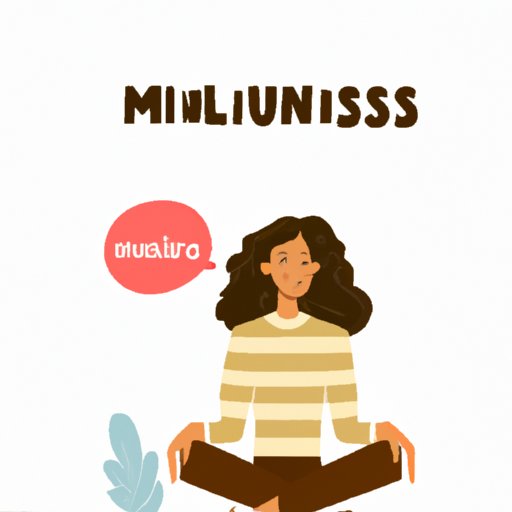
Introduction
Have you ever found yourself lying awake at night with a racing mind, unable to quiet your thoughts? Or perhaps you struggle to focus during the day because your mind is constantly jumping from one thing to another. You are not alone in this experience. Many people today suffer from the impact of racing thoughts, which can have a detrimental effect on our mental health and well-being. In this article, we will explore various techniques that can help quiet your mind, such as meditation, breathing exercises, connecting with nature, establishing a daily routine, keeping a thought journal, and practicing yoga and stretching.
Meditation Techniques
Meditation is a mindfulness practice that has been used for centuries to help quiet the mind and promote relaxation. By simply focusing your attention on your breathing, you can create a mental space where thoughts can pass without judgment or attachment. There are many different types of meditation techniques, each with its own unique approach and potential benefits.
Guided meditation is a great option for beginners as it provides step-by-step instructions and guidance throughout the process. Mindfulness meditation involves intentionally focusing your attention on the present moment without judgment, which can help reduce stress and anxiety. Transcendental meditation involves the use of a personal mantra and is designed to achieve a deep and effortless state of relaxation.
To get started with practicing meditation, find a quiet and comfortable place where you will not be disturbed. Sit in a comfortable position with your back straight and your hands resting on your lap. Close your eyes and focus your attention on your breath. As thoughts come up, simply acknowledge them and let them pass without judgment or attachment. Continue breathing and focusing on your breath for at least five minutes.
Breathing Exercises
Breathing exercises can be a powerful tool for calming the mind and reducing anxiety and stress. Deep breathing has been found to activate the parasympathetic nervous system, which is responsible for promoting relaxation and restfulness.
One simple breathing exercise you can try is called 4-7-8 breathing. Begin by sitting upright in a comfortable position. Breathe in through your nose for four counts, hold your breath for seven counts, and exhale through your mouth for eight counts. Repeat this cycle at least four times, or until you feel more relaxed and calm.
Connecting with Nature
Spending time in nature can be a powerful way to quiet the mind, reduce anxiety, and enhance our attention and focus. Human beings have an innate connection to nature, and research has shown that spending time in natural environments can improve our mental and physical well-being.
To connect with nature, try going for a walk in the park, cycling on a nature trail, hiking in the woods, or simply spending time sitting outside in the sun. Take some time to notice the sights, sounds, and sensations around you without judgment or attachment. Doing so can help you feel more grounded and connected to the present moment.
Establishing a Daily Routine
Establishing a daily routine can be an effective way to create a sense of balance and structure in your life. By prioritizing self-care and mindfulness, you can better manage stress and anxiety and promote a sense of well-being.
A good way to start is by setting aside a specific time every day to practice mindfulness or meditation. It can also be helpful to establish a regular sleep schedule, eat well, and exercise regularly. Incorporate activities that bring you joy and relaxation, such as reading, listening to music, or taking a long bath.
Keeping a Thought Journal
Journaling can be a powerful tool for increasing self-awareness and managing stress and anxiety. Reflecting on your thoughts, feelings, and experiences can help you identify patterns and gain insight into your own mind.
To start a thought journal, simply set aside time each day to reflect on your day or your inner thoughts. Ask yourself questions such as “what am I feeling right now?” or “what was the highlight of my day?” or “what am I grateful for today?” Write down your responses without judgment or attachment.
Yoga & Stretching
Practicing yoga and stretching can be a powerful way to promote relaxation and reduce muscle tension. Certain postures and stretches can help release stress and promote physical and mental well-being.
A good way to get started is to try some gentle yoga poses, such as the child’s pose, downward-facing dog, or cat-cow stretch. Hold each pose for a few breaths and try to focus your attention on your breath and the sensations in your body.
Conclusion
Quieting the mind can be a challenging but worthwhile task. By practicing techniques such as meditation, breathing exercises, connecting with nature, establishing a daily routine, keeping a thought journal, and practicing yoga and stretching, you can promote mental and physical well-being. It’s important to remember to be patient with yourself and to practice these techniques regularly. With time and commitment, you can achieve a quieter and more peaceful mind.
If you’d like to explore these topics further, there are many resources available online or in your local community, such as meditation classes, yoga studios, or nature trails. Remember to prioritize your mental health and well-being and to seek support as needed.




